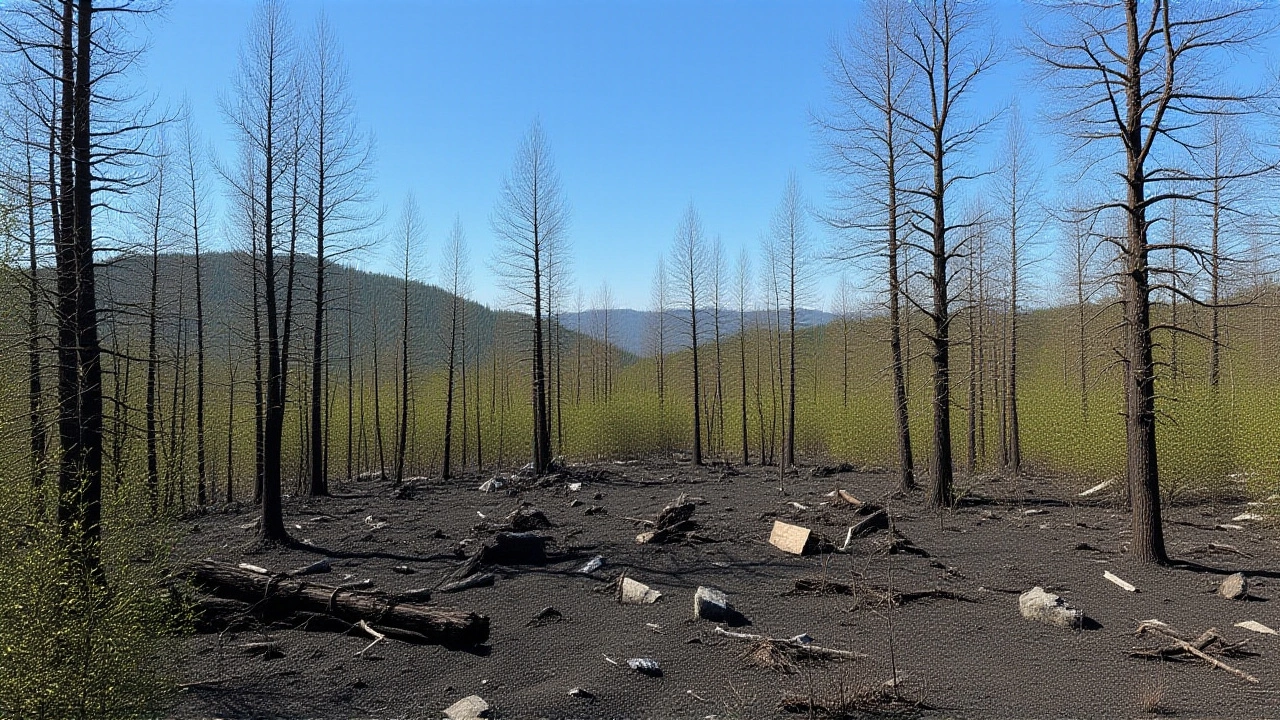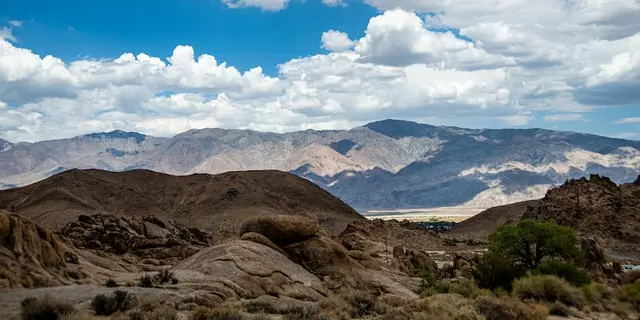
When Basavaraj K.N., Deputy Conservator of Forests of the Karnataka Forest Department announced that the blaze on Chamundi Hills was a deliberate act of sabotage, the news jolted residents of Mysuru and sparked a flurry of questions about forest safety in the state.
The inferno ignited on Friday, 21 February 2025 at about 1:04 PM IST, within the Uttanahalli sector of Chamundi Hills. Strong winds clocked at 45 km/h and a scorching 33 °C temperature turned a small spark into a raging fire that ripped through roughly 30‑50 acres of reserve forest before crews finally declared it fully extinguished around 11:30 PM.
Background: A Forest Under Pressure
Chamundi Hills, sprawling over 10,200 hectares, has long been a treasured ecological and cultural landmark. The hill‑top temple draws millions of pilgrims each year, while the surrounding forest, classified as a Reserved Forest, shelters several native species. In August 2024, a 15‑acre accidental fire forced the department to tighten its fire‑line patrols, but the recent incident marks the first time officials have publicly labelled a blaze as sabotage.
The February 21 Fire – A Minute‑by‑Minute Account
According to Gururaj, District Fire Officer of the State Fire and Emergency Services Department, the first flames were spotted at 1:04 PM near two separate ignition points. Within ten minutes, five fire tenders and two quick‑response teams had surged to the scene, followed by a further two fire engines dispatched from the Mysuru fire station.
Drone footage captured by the forest department’s aerial unit showed the fire licking the valley floor, feeding off dry underbrush and the gusty wind. By 5:00 PM, crews reported 90 % containment, yet a stubborn ground fire lingered near the main viewpoint. The final smolder was finally stamped out at 11:30 PM, after a total of 70 personnel – a mix of forest guards, fire‑service fighters, and volunteers – had rotated through the operation.
Sabotage Claim and Ongoing Investigation
During a press briefing on Saturday, 22 February, Basavaraj K.N. declared the incident "an act of sabotage" and announced that an FIR had been lodged at the local Mysuru police station. He explained that forensic analysis of the ignition sites indicated the use of accelerants, and that the fires were set intentionally at two separate locations.
The FIR, recorded under Chamundi Hills Forest FireUttanahalli, Mysuru, lists “unknown miscreants” as suspects. Investigators have deployed additional drones from the Karnataka Forest Department’s Bengaluru headquarters to map burn patterns and identify any surveillance footage that may have captured the perpetrators.
On the same morning, 22 February, a secondary blaze erupted near the foothills, this time ignited on a garbage pile outside the official forest boundary. The rapid response prevented it from merging with the main fire, but it underscored the vulnerability of the area to repeat incidents.
Community Reaction and Political Pressure
The sabotage allegation ignited a wave of protest. Around 11:30 AM, members of the regional activist group Karnataka Sena Pade gathered outside the old Deputy Commissioner’s office, demanding immediate arrests and stricter surveillance of the hills.
Meanwhile, N Shashishekar Dixit, chief priest of the Chamundeshwari Temple, assured devotees that the temple structure remained unharmed, but confirmed that fire‑extinguishing operations continued into the night to protect the shrine’s stone steps and surrounding vegetation.
Impact Assessment and Future Safeguards
While the Department confirmed that no wildlife perished, two mature trees were completely reduced to ash, and a handful of saplings suffered scorching damage. The loss of 30‑50 acres translates to roughly 0.3‑0.5 % of the total forest cover, a seemingly small slice but a stark reminder of how quickly a protected ecosystem can be compromised.
In response, the forest officials have instituted a temporary security protocol: all four access gates to the temple complex will now close from 6:00 PM to 6:00 AM daily, a measure aimed at limiting night‑time foot traffic that could inadvertently spark another fire. Temporary staff have also been posted along the fire line to monitor for illegal activities.
Long‑term plans discussed in the briefing include installing permanent CCTV cameras at strategic hill‑top points, expanding community‑based fire‑watch groups, and conducting quarterly fire‑prevention drills with local schools. The department hopes these steps will deter future sabotage attempts and restore public confidence.
Key Facts
- Event: Chamundi Hills Forest Fire (claimed sabotage)
- Date & Time: 21 Feb 2025, 1:04 PM IST – 11:30 PM IST
- Area Burned: Approx. 30‑50 acres of reserve forest
- Response: 70 personnel, 5 fire tenders, 2 quick‑response teams, drone surveillance
- Outcome: No wildlife deaths, 2 trees lost, FIR registered, gate closures implemented
Frequently Asked Questions
What evidence points to sabotage rather than an accidental fire?
Forensic teams found accelerant residues at both ignition points and identified distinct burn patterns that would be unlikely in a natural spark scenario. Drone footage also showed the fire starting simultaneously in two separate spots, a hallmark of deliberate ignition.
How many people were affected by the gate‑closure decision?
The nightly closure impacts roughly 3,000 daily visitors to the Chamundeshwari Temple and nearby trekking routes. Local vendors have reported a dip in evening sales, but officials argue the safety trade‑off outweighs short‑term revenue loss.
Will the FIR lead to arrests?
Police are reviewing CCTV feeds and eyewitness statements. While no arrests have been made yet, the FIR enables law‑enforcement to expand the investigation and potentially charge any identified suspects under Karnataka’s Prevention of Damage to Forests Act.
How does this fire compare to the August 2024 incident?
The August 2024 blaze consumed about 15 acres and was deemed accidental, likely caused by a stray cigarette. The February fire is larger, more aggressive, and now classified as intentional, marking a worrying escalation in threat level for the reserve.
What long‑term measures are planned to prevent future sabotage?
Authorities intend to install permanent surveillance cameras, expand community fire‑watch volunteers, and conduct quarterly drills with local schools. Additionally, stricter penalties for illegal waste dumping near forest edges are being proposed.




